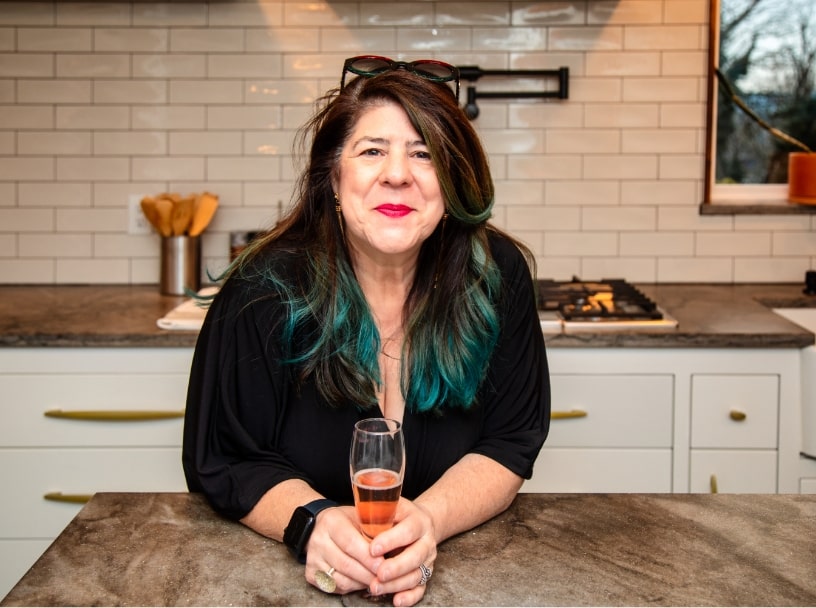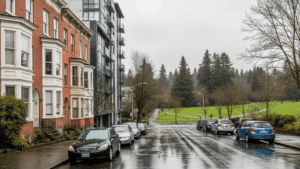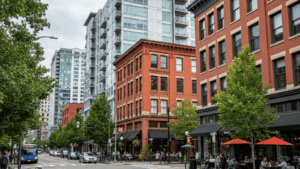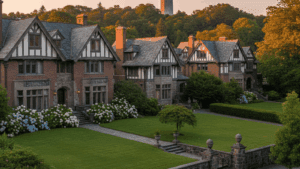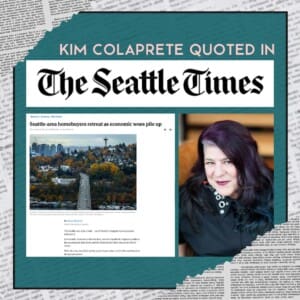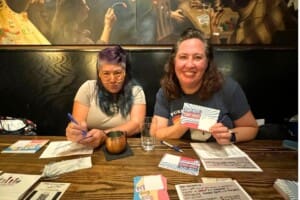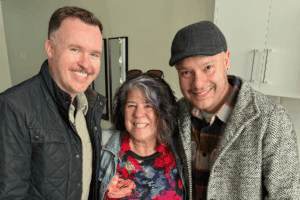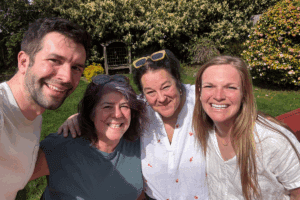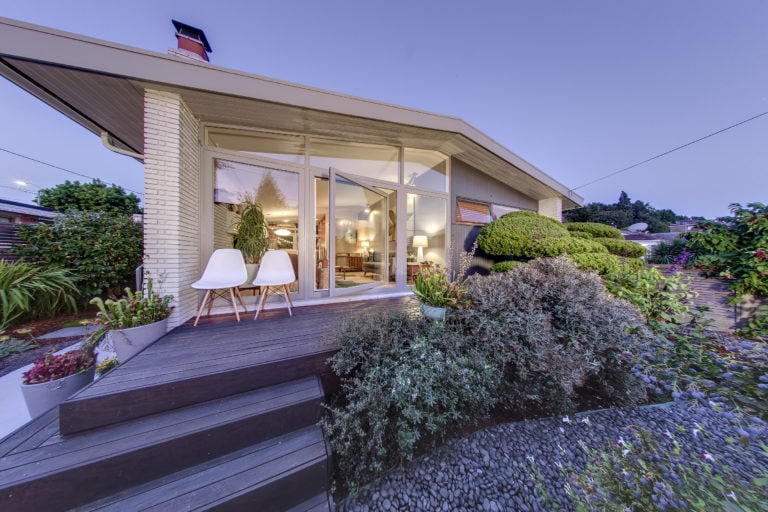Over the last four years, Mike McGinn has continued to make public comment on Seattle’s infrastructural challenges. He’s the only candidate in 2017 who has actually done the job, now that we have no incumbent. We at Team Diva asked him and other candidates to share their vision for Seattle for the coming years. Especially regarding a few key issues, including housing affordability and transportation. McGinn has joined four other candidates who have responded to our questionnaire. We present his answers here. What does he have in mind to tackle the complex challenges ahead of us after four years away from the mayor’s office? Read on to find out.
Arts Support and Funding
The wry question in the local art scene these days is, “How fast are you going to move to Tacoma?” Seattle needs a thriving arts community to be a truly cosmopolitan city. The Arts & Cultural Districts program is in its nascence, and its efficacy is still in question. How do you see yourself as the mayor increasing and supporting our local arts community?
Seattle’s arts, culture, and heritage communities help make our city a great place. They contribute to our quality of life, are a vital part of our neighborhoods, and a centerpiece of our economy. By protecting and supporting our local institutions and facilities, we can help ensure artists continue to be successful.
I would pursue a wide range of policies to support the local arts community, including housing affordability for local artists (addressed in the next question), funding for the arts and arts-related community projects, bolstering open and transparent governance, and ensuring that diversity and social justice are promoted through our investment in the arts.
Below are a few key highlights of promoting the arts during my time as mayor. I mention these because they show my commitment to arts, one I would continue if given the opportunity to serve again:
- Preserved arts funding through the recession, investing over $6 million in 350 organizations, artists, community festivals, youth training and other projects, serving nearly five and a half million participants from 2010-2012 through the Office of Arts & Cultural Affairs.
- Brought KEXP and the new Chihuly exhibition to financially strengthen and activate Seattle Center, home to 19 arts organizations, and worked to sustain the existing organizations facing financial difficulty from the recession.
- Invested in Seattle Center and its “Next 50” celebration activities by upgrading food court facilities and remodeling the armory through Office of Arts & Cultural Affairs.
- Made the East Precinct parking lot available for the 12th Avenue Arts project, which created 6,200 square feet of new dedicated affordable cultural space.
- Helped develop a joint Mayor-Council resolution designating a Downtown Historic Theatre District to support the preservation, promotion, and maintenance of Seattle’s downtown historic theaters.
- Partnered with the Seattle Public Schools to launch and help fund “Creative Advantage”, to ensure that every student received arts education.
- Worked with Americans for the Arts to produce an economic portrait of the impact of arts and culture organizations on our region. The report shows a $447.6 million industry supporting nearly 11,000 full-time equivalent jobs and generating $38.2 million local and state revenue.
- Produced the Working Plan for Art on the Central Seattle Waterfront – a document that will guide art plans for the largest infrastructure project in Seattle in this decade.
- Launched new funding programs in the area of space for artist and arts organizations (Cultural Facilities) and job creation in the arts and cultural sector (Arts Mean Business).
- In 2010-2011 the Department of Neighborhoods awarded 79 grants to arts organizations and projects, totaling over $500,000, which was matched by over $750,000 in private funds.
- Provided $275,000 in capital funding to Coyote Central (Central District), Taproot Theater (Greenwood) and Velocity Dance Center (Capitol Hill) for cultural facilities that serve the broader cultural community and support neighborhood quality of life.
- Supported displaced artists through work on the INSCAPE project in the former Immigration and Naturalization Services building. With upwards of 125 tenants in 77,000 square feet of historic space, INSCAPE is the largest arts and culture enclave in Seattle. The city invested $10 million in New Markets Tax Credits and $3 million in HUD Section 108 loan funds.
- Funded a record 75 smART ventures projects in 2010 and passed 500 prospective applicants in 4 years – all given 1-to-1 technical assistance. Over half of smART ventures serve diverse underserved communities, including communities of color, refugee/immigrant, LGBTQ communities, youth, incarcerated, homeless, and people with disabilities.
- Advanced a five-year effort between Seattle Public Schools and the Office of Arts & Cultural Affairs – known as the Arts Education Partnership – to align resources and build an improved system (including budget, arts partnerships, professional development and instructional tools).
Affordable Housing/Homelessness
Housing, homelessness, and affordability are often entwined but have different solutions. Without a doubt, the housing levy dollars have not been making its way back into the community as it has in the past. Rental advocacy is starting to make its way through the community with different responses. Regardless, housing is a global issue and there is not a lot we can do about rising home prices. However, there is a lot we can do to help our homeless and create better housing options for those who make below the average income in Seattle. Specifically, how would you better manage the money from the housing levy, create down payment assistance programs, and provide permanent housing for our homeless community? Considering that drugs, alcohol and mental health issues are intertwined within this community, what is your holistic approach to dealing with homelessness in Seattle?
I voted for the housing levy because it is essential, but we need to take a hard look at where our money is going and how we tax. Our City’s general fund has increased by 25% over the past 3 years, over $250 million a year in new spending. If elected, I would immediately review the budget. In the 2010 recession, I cut the budget by $67 million while protecting human services. I will take the same approach now, except instead of balancing the budget we can take the savings and redirect it to essential needs and social services.
Right now, homelessness must be the highest priority. I would work to expand low barrier shelters, regulated encampments, and housing vouchers to immediately house those in need.
I agree about the need for a holistic approach to homelessness that takes into account the linkages with issues such as substance abuse, domestic violence, and mental illness. For example, during my administration, we launched Law Enforcement Assisted Diversion downtown which gave officers the ability to connect drug users with services rather than jail time. If elected, I would work to expand that citywide. We also must look to expand mental health services. Unfortunately, we cannot expect the state and federal governments to increase funding for our needs. We have to look at our own resources, which is why my tax fairness plan looks at taxing big corporations or the wealthy to pay for new initiatives.
I believe we can do more to provide more affordable housing. I’d work with neighborhoods on a strategy to allow more diverse housing types, including “missing middle” housing (backyard cottages, mother-in-law units, duplexes, and triplexes), congregate housing, subsidized housing for teachers and service workers, and senior housing.
We should also significantly expand public housing, financed by an income tax on the wealthy or new revenue streams from large successful corporations. If we keep relying on regressive tax sources, we’ll keep pushing people out of Seattle.
Transportation
Seattle consistently passes transportation levies to support buses, bike lanes, sidewalk expansion, and more. Yet our roads are in poor condition, especially in the non-core neighborhoods, and resources are not distributed evenly across the city. How are you going to better manage the city’s transportation dollars?
To keep infrastructure in the best condition possible, prolong its useful life and minimize costs, regular investments must be made in preventive maintenance – we need to make sure what we have works and lasts. As mayor, I prioritized regular investments in local streets over mega-projects, and I would do that again. While we focus on the basics (potholes, safety, sidewalks, etc), we also need to make sure our transportation system can support the growth we’re seeing today and will continue to see for the next 15+ years. We’re going to have to move even more people and goods in the same amount of space, which means investing in transit.
In terms of better managing the city’s transportation dollars, I would focus more on equitably distributing resources and investing in parts of the city with the greatest needs. I would focus on improving safety along the streets with the most crashes, like Rainier Ave S. And when we make investments in transit, we should focus on the routes that serve the most transit-dependent communities (often communities of color, youth, seniors).
As Mayor, I would require any levy package that is put on the ballot to be accompanied by a spending plan that clearly outlines all major deliverables, the sources of funds for those deliverables (levy funds and other non-levy funds), and the anticipated timing for expenditure/completion. With regard to the existing levy, on a semi-annual basis, I would require the department(s) responsible for completing the levy commitments to report on the project status and actual spending patterns by fund source, and I would post this information on the levy website. This tracking mechanism would allow the public to track how their tax dollars are being spent. If a project timeline is slipping or is over budget, it would be up to me as Mayor to work with the department to explain what is causing the problems and proactively develop a plan to get the project back on track (i.e. avoid cost overrun surprises as was the case with the SPU/SCL billing system). If on the other hand, projects were coming in at lower-than-anticipated costs, it would provide me with the opportunity to work with the department and the public to reprogram those dollars towards other needs.
Policing
Despite five years of federal oversight under a consent decree, the Seattle Police Department’s reputation for biased policing and excessive force persists. This view is not helped by projects like the Bunker and the Youth Jail. At this point, the most visible actions by the SPD typically involve quashing protests and demolishing homeless encampments–not the image one would expect from a Sanctuary City. As mayor, what reforms would you push for in policing and its overall place and perception in the city?
If elected, I would push for reform in the following areas:
1. Community Oversight of Policing. The tragic shooting of Charleena Lyles indicates that the DOJ reform process is not working with regard to use of force, de-escalation, and bias. If elected, I would work with the Community Police Commission and the Council to initiate a thorough audit of the reform process. When I negotiated the consent decree in 2011 I worked to establish a CPC because I believe reform will only work if there is strong community oversight. I appointed well-known police reform leaders from the community, including many who had called for the DOJ investigation, because I did not want the reform process to be hijacked by politics. For three years we have seen rounds of self-congratulation over the success of police reform. The time for self-congratulation is over. It is time for a realistic assessment, led by the CPC, of whether reform is working, and how to get it back on track. I also believe that Seattle should run its Police Academy with training approved by the CPC, instead of using the State Academy, to ensure our officers are getting appropriate training for Seattle.
2. Prevention and Harm Reduction. During my administration, we launched Law Enforcement Assisted Diversion downtown which gave officers the ability to connect drug users with services. That should now be expanded citywide. We expanded our Youth Violence Prevention Initiative to cover more at-risk youth. We launched Career Bridge to help felons returning to the community and this too should be expanded. Focusing on punishment is often the wrong answer when we should be working to give people a better path. If elected, I would work to bring together city agencies, and work with other governments, to take a holistic approach to public safety where we work to address root causes.
3. Build Stronger Community Connections. People of color should have confidence they can interact safely with the police. Immigrants and refugees should be able to approach the police without running afoul of Trump’s anti-immigrant policies. While the CPC works at a citywide policy level, we need community level forums where police and community members can identify and work on obstacles to stronger trust. We did this through our Safe Communities Initiative and would bring it back. We also need to renew efforts to hire more police from our own communities, and more police with language skills.
Southeast Seattle
Every political season candidates come down to Rainier Valley for a photo op and then disappear for another four years. Meanwhile, the resources in our very wealthy city do not make it south of the ship canal. There is a long history of redlining through actual practice or out of habit in our city. Many mayors have had pet projects they have installed in south Seattle but have not created the infrastructure in the neighborhood to support these projects. As a sanctuary city many of the residents we want to protect reside south of the ship canal. Will you be the mayor will make an effort to create safer streets, add curbs and sidewalks, mow the city owned portions of the mediums, and truly make a positive impact on the neighborhood? Or are you a photo op person?
Yes, I will be the mayor to do that. As I mentioned in the transportation question earlier, I will make it a priority to rapidly expand safety improvements on Rainier Ave S, our city’s single most dangerous street and one located in an underserved part of our city.
I am not a photo op person. I believe in sustained investments in these neighborhoods. The largest investment undertaken by the Parks department under my administration was the Rainier Beach Community Center.
Below are other examples of my commitment to residents in Southeast Seattle and our immigrant and refugee communities:
- Helped nearly double the Families & Education Levy for programs such as English Language Learning (ELL), and higher standards for English Language Learning instruction across the school, health care in bilingual schools, family support, and mental health services, and more helping to close the achievement gap.
- Established the Office of Immigrant and Refugee Affairs, in response to the growing immigrant and refugee communities in the city.
- Sponsored an internship program for high school and GED youth through the Department of Information Technology, called Year-Up.
- Started a pilot for individuals with high barriers to employment with comprehensive services and support to prepare for and access good paying jobs with long-term career options.
- In 2013-2014 Mayor’s proposed budget, funded additional support for children and youth at-risk with after school and late night drop-in hours at community centers serving communities of color, and expanded youth violence prevention by $1.6M to serve 450 more youth.
- In 2013-2014 Mayor’s budget, funded Communities Uniting Rainier Beach (CURB) and implemented the Career Bridge program to better support vulnerable adults working to build their lives as refugees or rebuild their lives following prior convictions or criminal records history.
- Supported Comprehensive Immigration Reform and the Violence Against Women Act with letters to President Obama and Senators Cantwell and Murray, and supported the local community through participation in immigration marches, rallies and press conferences.
- Preserved city funding for naturalization services when the state undertook massive cuts to this program.
- Began an innovative program to help immigrant and refugee young people age 15-20 prepare for the workplace with training that is coordinated with support and education for their families.
- Changed the City’s translation and interpretation services to allow them to be more inclusive of the immigrant and refugee populations.
- Increased access to hundreds of state-certified interpreters for hearings and other court matters by working with the Seattle Municipal Court.
- Prioritized translation of documents about city services in up to thirty languages.
- Awarded more than 200 projects serving underserved and immigrant and refugee communities, providing nearly $5 million, through the Neighborhood Matching Fund
- Provided one-on-one technical assistance for Neighborhood Matching Grants to communities of color, youth and immigrant and refugee groups.
- Offered extensive translation and interpretation services and gardening classes through the P-Patch Community Gardening Program to East African Communities.
- Worked with immigrants, refugees, Seattle Housing Authority, and the P-Patch Program to operate market gardens (for gardeners to sell their produce) at two public housing sites.
Education Funding
Now, more than ever, Washington state needs to step up and fully fund education. The resulting impact on funding education will be an increase in the property taxes here in Seattle. The bulk of the fight is happening in Olympia. How do you see yourself working with Olympia to make sure Seattle gets the resources it deserves without harming poorer homeowners?
The Legislature recently passed a budget that fully funds education, but it does so via property tax increases, which is a regressive form of taxation and a source that we rely on for many other investments.
As mayor from 2010-13, I enjoyed strong working relationships with other mayors, as well as the King County Executive, because we met regularly and listened to each other. I led regional coalitions on new funding approaches for local streets. If elected, I would partner with other regional leaders to restart a statewide conversation around tax reform as a way to increase affordability, diversify revenue streams, and reduce our reliance on regressive taxes.
As described above, I also worked to increase the Families and Education Levy.
Sanctuary City
For all the reasons above, there is a reason to be skeptical that Seattle can be more than well-meaning in calling itself a Sanctuary City. A housing crisis, questionable policing, unaddressed histories of racial bias and segregation (and anti-immigrant sentiments) that persist to this day all seem to prevent us from providing a safe haven for people fleeing violence elsewhere. As mayor, what would you do to lay the foundation for being a Sanctuary City, in a way that integrates with the many other problems our city faces?
Declaring ourselves to be a Sanctuary City needs to be more than a symbolic act. My answers above speak to my priorities. I have also put out a comprehensive immigration and refugee platform at www.mcginnformayor.com/immigrants_and_refugees
Bottom line – we have to run this city for the people, not the powerful. In both my previous campaigns the Chamber of Commerce and the Seattle Police Officers Guild ran independent expenditure campaigns against me because I challenged their agendas. That tells me I was on the right track.
Keep track of Mike McGinn’s campaign on his official Facebook page and http://carymoonformayor.com/



